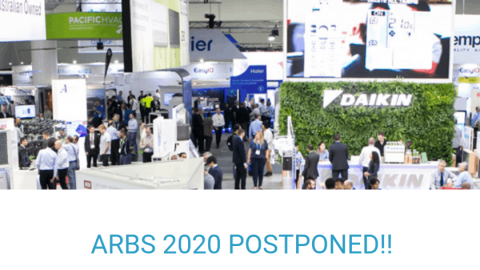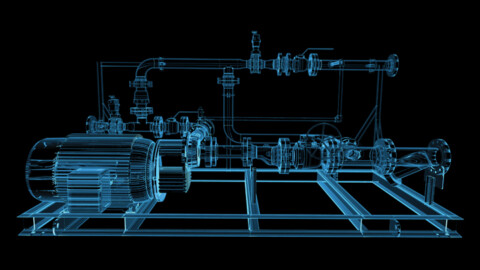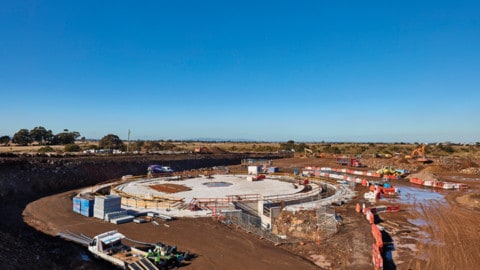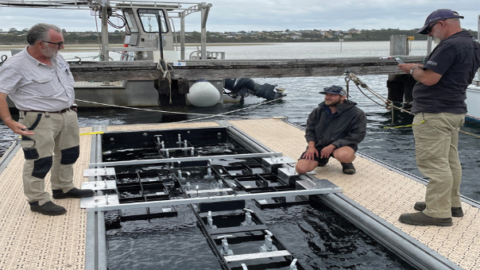By Luisa Romeo, Journalist, Pump Industry magazine
With the CSIRO estimating that 40-60 per cent of household energy consumption is used for air conditioning and water heating, and the costs of power rising, the installation of geothermal systems for residential and commercial heating, ventilation and air conditioning systems (HVAC) has become popular as an energy efficient, environmentally friendly and reliable alternative to conventional systems in Australia. Here, we look at how geothermal compares to conventional HVAC, the equipment involved and how it works.
Geothermal systems have been used in applications for many decades in North America and Europe as highly efficient and reliable sources of heating and cooling, helping to reduce dependence on fossil fuels.
While it has yet to receive the same level of popularity in Australia, it is starting to gain more traction for single dwelling, small commercial applications and pool heating, and is being installed as part of a major residential development – the largest system of its kind in the southern hemisphere.
Geothermal vs conventional HVAC
The key difference between geothermal and HVAC systems is that geothermal systems use the ground as a heat source in winter and as a heat sink in summer.
On the other hand, normal air conditioning systems have a condenser sitting outside the home, which has a coil that refrigerant runs through and a fan sitting behind the coil to disperse air across it.
This means in summer it uses the outside air to reject heat from the condenser coil, and in winter it uses outside air to collect heat.
The main benefit of this set-up for geothermal systems is that the temperature below ground is constantly 22-23 degrees, so less energy is required to provide heating or cooling, whereas air temperatures vary on a seasonal – and daily – basis, affecting the efficiency of conventional systems.
However, because geothermal requires coils to be placed below ground, installation costs more than conventional HVAC as more work and equipment is required during construction.
Generally, this additional cost will be recouped quickly due to geothermal’s energy efficiency and low operating costs – and therefore decreased utility bills.
Another difference between geothermal and conventional HVAC is the design and amenity of the equipment. Geothermal systems are generally much smaller than normal air conditioning condensers, so they don’t have the same noise and airflow issues associated with conventional systems.
This becomes more beneficial as housing lots get smaller or when there is no backyard as these systems are much quieter than air conditioning condensers and free up room if there is an attached outdoor space.
How does geothermal HVAC work?
Geothermal HVAC systems use a ground source heat pump to move a refrigerant through underground coils.
In cooling mode, the heat pump circulates a hot refrigerant gas through the geothermal loops in the ground so that it can absorb the cooler temperatures found below the earth before becoming a liquid.
It then gets sent to the heat pump where the pressure is lowered so it cools further before it is circulated through the fan coil unit in the home to absorb the heat in the air and cool the house.
In heating mode, a cool refrigerant is circulated through the geothermal loops to absorb the heat from the ground. It is then compressed and circulated through the fan coil unit to provide heating.
In both modes, after the refrigerant has re-heated (cooling mode) or cooled (heating mode), the cycle repeats itself.
How the system provides cooling and heating
- The heat pump uses a compressor to compress a refrigerant gas
- Thermal energy is rejected to the ground via hot (or cold) refrigerant
- The hot (or cold) refrigerant is circulated through a fan coil unit in the home providing ducted heating or cooling
- Waste heat can be captured for use in heating domestic hot water
The future of geothermal HVAC in Australia
The Australian Renewable Energy Agency (ARENA) has provided $500,000 in funding to Climate-KIC Australia to lead a three-year longitudinal study, monitoring 40 homes in a new residential precinct, to see what the benefits of geothermal are for the residential sector and greenfield estates.
Climate-KIC is leading the project team comprising University of Technology Sydney (UTS), Curtin University, Wattwatchers and the Green Building Council of Australia, with $180,000 each of funding as well as in-kind support over three years from the NSW Office of Environment and Heritage, and Frasers Property Australia.
The study, which began in 2019, will look at not only energy efficiency, but also comfort levels, indoor air quality and a range of other factors that are important for residential homes.
If successful, the project will pave the way by establishing a business case for industry-wide adoption of ground source heat pumps within local, renewable and efficient energy systems.

















